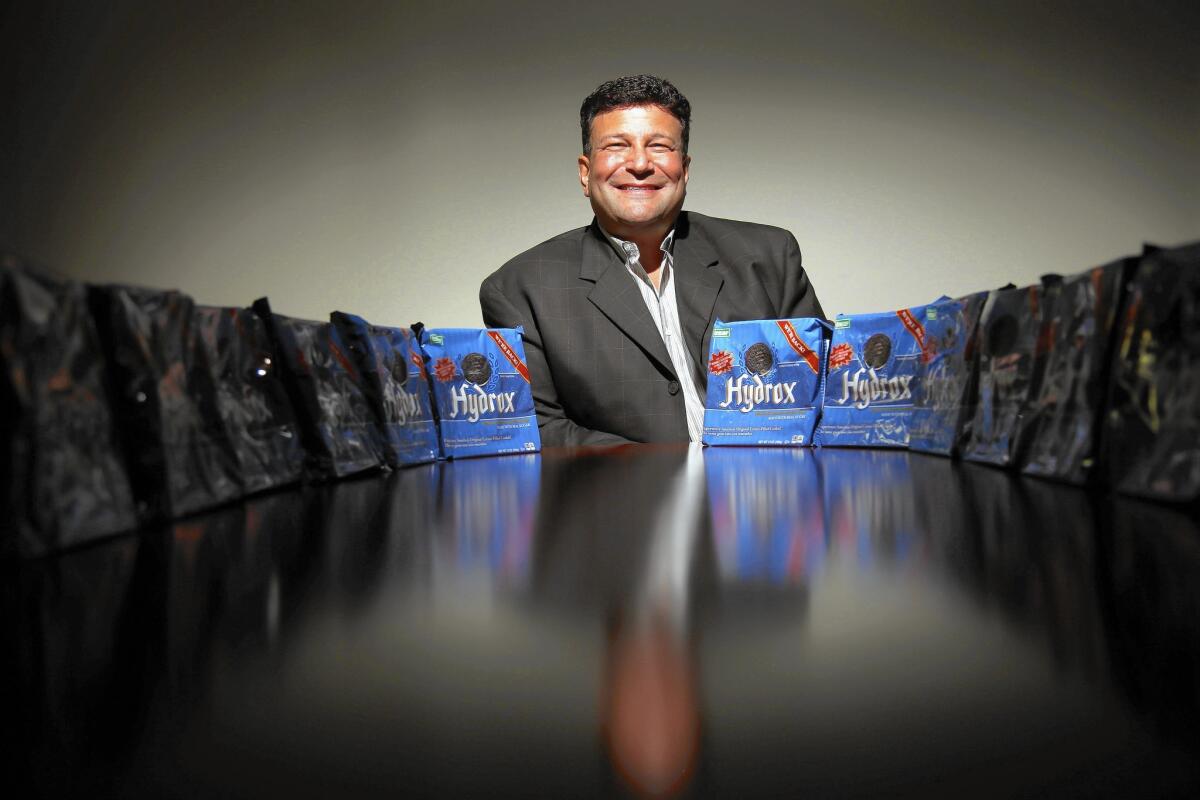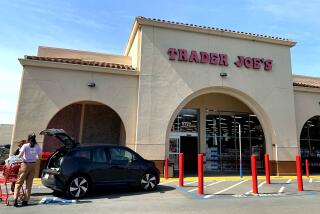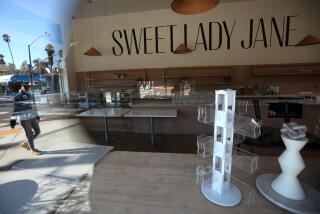Hydrox cookies are set to make a comeback, could challenge rival Oreos

As a child, the only sandwich cookie in Ellia Kassoff’s home was Hydrox. Not Oreos. Hydrox.
Decades later, the entrepreneur is resurrecting the product he used to love.
After years of dormancy, Hydrox cream-filled chocolate sandwich cookies are coming back. The cookies, which predate Oreo, could challenge its former rival and are available only via pre-order on Amazon.com.
Hydrox is scheduled for release Sept. 25. When they’ll appear in grocery stores is an open question. Kassoff said major national grocery chains have expressed interest.
“Nostalgia is powerful,” said Kassoff, chief executive of Leaf Brands, a Newport Beach candy company that manufactures Hydrox at its factory in Vernon. “I want to capture that experience people had as a kid … the happier times that people remember.”
Paul Castrovinci, 60, said he has fond childhood memories of eating Hydrox with a glass of cold milk, and promptly ordered six packages the day it was listed on Amazon.
“It was always my special treat to have Hydrox cookies before bedtime,” said Castrovinci, a Nashville resident. “It’s one of those old things you had as a kid, and they go away, and you wish they never went away.”
Hydrox debuted in 1908, originally manufactured by Sunshine Biscuits. In 1996, the Keebler Co. bought Sunshine and in 1999 changed the recipe and renamed the cookie Droxies, Kassoff said.
“They really just played with the product so much that it alienated the customer base,” he said.
SIGN UP for the free California Inc. business newsletter >>
In 2001, Kellogg’s acquired Keebler and Droxies soon was dropped. Other than a brief reappearance in 2008 for the cookie’s 100th anniversary, Hydrox has been absent from shelves.
Under federal law, a brand goes back into the public domain if it is not used for three years. Interested buyers can pay $275 to the U.S. Patent & Trademark Office to apply for the trademark. Last year, Kassoff snapped up the Hydrox trademark.
Kassoff has revived other old brands like the cone-shaped candy Astro Pops and the pencil eraser-shaped Tart n’ Tinys.
He’s not alone — a number of entrepreneurs have looked to past brands such as Turkish Taffy or Clearly Canadian sparkling water as potential moneymakers. But resurrecting brands can be tricky.
“If a brand dies, something led it to die,” said Derek Rucker, professor of marketing at the Kellogg School of Management at Northwestern University. “There were probably associations that you and I as consumers didn’t like about the brand.”
Kassoff said it was sales and marketing decisions, not the product, that led to Hydrox’s demise.
“The misconception about resurrecting brands is, ‘Oh, these brands must have died because nobody wanted them anymore,’” he said. “In most cases, that isn’t true.”
The biggest challenge was finding the original recipe, before it was reformulated. Kassoff is tight-lipped about how he accomplished that: There are enough people in the cookie industry that could serve as consultants, he said, and the original vendors for Hydrox ingredients helped rebuild the recipe.
Kassoff set up a Facebook page for Hydrox cookies, and fans quickly started posting memories. Some of these fans also became taste testers for initial cookie samples.
“You have to make sure you have fan buy-in with a lot of these products,” Kassoff said. “If it’s not exactly the way they remember it, you’ll get one sale.”
Wendy Davie-Longnight of Eugene, Ore., said her father still has packages of cookies saved from the last time Hydrox was sold in stores. During holidays, the family held blind taste tests to see who could tell the difference between Hydrox and Oreo. Most got it right and said Hydrox was better.
“I’m sure I will be doing the exact same thing,” said Davie-Longnight, 50. “I will get Oreos and I will get Hydrox and I will make my children do the taste test.”
To take on the “powerhouse” Oreo, manufactured by Mondelez International Inc. of Deerfield, Ill., Hydrox will have to have a meaningful point of difference, Rucker said.
“Oreo is definitely a more engaged brand with the public,” he said. “What the best brands do is they become part of our lives, not just a badge of quality.”
Kassoff said Hydrox cookies are crispier, made of darker chocolate and have a less sugary filling with no high fructose corn syrup. He has also touted the cookie’s distinction of being made in the U.S. In July, Mondelez said it would invest more than $130 million in its Salinas, Mexico., production plant, which would assume the Oreo production responsibilities from a Chicago facility.
Company spokeswoman Kimberly Fontes said the Chicago plant will still operate and that Oreos will continue to be produced in several U.S. plants, including in New Jersey, Oregon and Virginia.
Kassoff said a new competitor for the chocolate sandwich cookie will only be positive.
“Hydrox is the one product that will keep Oreo in line,” he said.
MORE BUSINESS NEWS:
Grocery chain Haggen is leaving California, Nevada and Arizona
Disneyland sets closing of attractions to build Star Wars Land
VW cheating scandal prompts EPA to road-test all diesels







